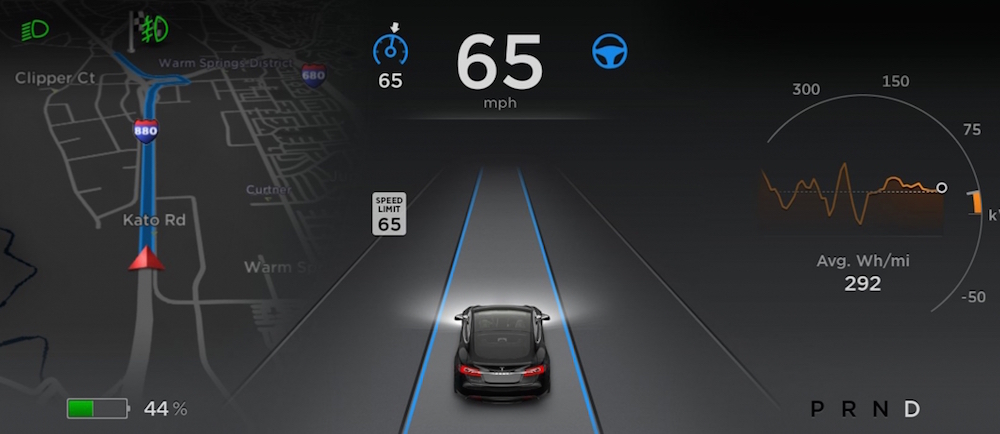The Brainy Tesla Model S Can Now Drive Itself
A software update has enabled 60,000 Model S electric cars to cruise driver-free in “autonomous mode.”

TeslaModel S owners awoke this morning to find their electric cars can now drive themselves, after the company performed a dramatic, over-the-air software upgrade last night.
It turns out that for the last year, Tesla CEO Elon Musk’s company has been building cars with the forward-looking camera, radar and ultrasonic sensors needed for autonomous driving, and now the software is ready to put that hardware to work.

Calling the software release “a public beta,” Musk cautioned that the software is still very unrefined, so drivers need to stay alert and ready to take over if the car becomes confused. However, because all Teslas are networked to the company’s computer system, as customers add miles of experience driving in autonomous mode, the computer will get progressively smarter.
“The big differentiator here is that the whole Tesla fleet operates as a network,” Musk said at a news conference. When one car learns something, the whole fleet learns it.”
Musk, who is famously concerned about out-of-control artificial intelligence added, “It is machine learning. They are creating a collective fleet intelligence.”
Grinning at the apparent conflict between his position against artificial intelligence and his own machine learning network, he added, “I don’t think we have anything to worry about cars taking over the world.”
But, just as in the dystopian movies about malevolent AI intelligence, “people should see the car improve with each passing week,” Musk said.
In the case of autonomous driving, that is a good thing, as the cars will get bamboozled by poor traffic markings or other ambiguous situations less frequently. Supplementing the crowd-sourced intelligence, Tesla engineers monitoring the system will take note of locations where drivers are frequently having to take manual control of their cars and investigate to improve the programming for those spots.
In addition to its raft of on-board sensors, the Model S also relies on a high-precision digital map and GPS location to guide the car when the sensors are insufficient, as when the ground is covered by snow.
Although the system will get smarter and is backed up by GPS, the current Model S lacks the capability for the kind of true autonomy, where passengers can simply tell a car where to take them, according to Musk. That degree of autonomy will require a redundant computer, redundant steering motor, redundant forward cameras and a 360-degree camera system, he explained.
So when will true autonomy be available? “Technologically, Tesla will have a car that can have full autonomy in about three years,” Musk said. This estimate is hedged, he added, based on his history of announcing planned availability that proved wildly optimistic. Autonomy could come sooner than that, he said, “but I’m trying to recalibrate my time predictions.”
For the latest car news, follow @MaximRides and Dan Carney on Twitter.
Photos by Tesla Motors
